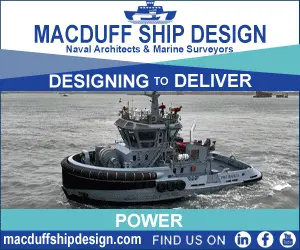Following successful prototype testing, Seaonics is moving swiftly towards the commercialisation of the Ocean Charger solution for electric Service Operation Vessels (SOVs). This comes at a time of heightened interest from wind farm developers, eager to adopt sustainable practices in the offshore wind industry.
With the global push towards reducing carbon emissions and increasing operational efficiency, Seaonics’ Ocean Charger is positioned to be a game-changer. The recent high-voltage charging tests conducted on the Rem Offshore-owned diesel-electric hybrid CSOV REM Power have demonstrated the solution’s viability. Tests were carried out both in port and offshore, where a charging point—featuring a cable reel, winch, and control system—was mounted on an offshore wind turbine.
“Apart from a few improvements, the concept and control system is ready, and the product is available for sale. We’re the first in the market and already in discussions with wind farm owners.” – Bjørnar Huse, Sales Manager Offshore Energy
The ability to charge vessels offshore, rather than returning to port, is a significant leap toward sustainable operations.
As Huse explains, “Connecting vessels to the wind farm’s power grid for regular battery charging eliminates the need for additional energy sources. It saves the time and energy needed to return to port to charge, while the operating cost of electric SOVs versus diesel and alternative fuels is much lower, because both the energy is cheaper and you reduce engine maintenance demands.”
For Seaonics, this solution is a direct response to the industry’s growing demand for energy-efficient, cost-effective alternatives to diesel. A large, 60-person SOV consumes 20 to 25 MW hours per day, so at 6 MW you can potentially charge for a full day’s operation in three to four hours.
For wind farm developers, the impact is equally significant. Installing charging points on turbines simplifies logistics and reduces the need for long-distance cruising to reach a charging station, further enhancing efficiency.
The Ocean Charger’s standardized solution is cost effective because it uses an industry-standard connector plug, a key factor in its appeal.
“We used a plug that’s already in use for shore charging cruise ships and hybrid-electric carriers, which meant we didn’t need to develop bespoke components. This allows for faster integration and cost savings,” says Huse.
The flexibility of the Ocean Charger allows it to be fitted to any turbine and SOV, and the power can be integrated with any vessel’s switchboard and charging voltage. This adaptability is crucial as power currents vary across wind parks and turbines, making custom solutions necessary
As offshore wind continues to expand, Seaonics is preparing to tailor the Ocean Charger to future wind farms. Engaged in discussions with wind park owners, the focus is on addressing the specific needs for integrating charging points into turbines and optimizing energy transformation onboard vessels. “It would take a few months to customize the configuration and get approvals for a specific wind park and vessel,” says Huse, underscoring the importance of early cooperation and planning for projects set to be operational in the next few years.
For wind farms that will be installed in two to four years’ time, there is ample time to do final integration design, fabrication and installation on a new chartered SOV or retrofit an existing one. Fitting the charging points to turbines before they are installed also streamlines the operation.
Seaonics can provide detailed cost estimates today, ensuring that stakeholders have a clear picture of the investment required. “We know exactly how much the vessel integration will cost and what the charging point on a turbine will cost. Total project cost will obviously vary depending on how many charging points it entails and customization required to match the owner’s operating parameters,” says Huse.
As the SOV approaches the charging point, a crane securely grabs the plug and connects it to the vessel’s integrated connection area, without the need for manual intervention. This automation ensures quick, precise charging, even in challenging sea conditions, enhancing operational efficiency.
During the charging process, the vessel remains on dynamic positioning (DP), but the system is built with a larger operational footprint to reduce power consumption. Additionally, the cable includes slack, allowing the vessel to move up to 20 meters without risk of damage. In the event of a positioning issue, the DP system’s safety protocols automatically kick in, ensuring that the cable is released in an orderly manner. The system also includes two layers of redundancy for emergency release, providing an extra layer of protection.
Given the risks of water intrusion in offshore operations, the Ocean Charger is designed with a watertight cover that automatically seals the plug when not in use, protecting it from submersion and potential damage. This ensures both the plug and cable are safeguarded, reducing the need for costly repairs and extending the system’s lifespan.











